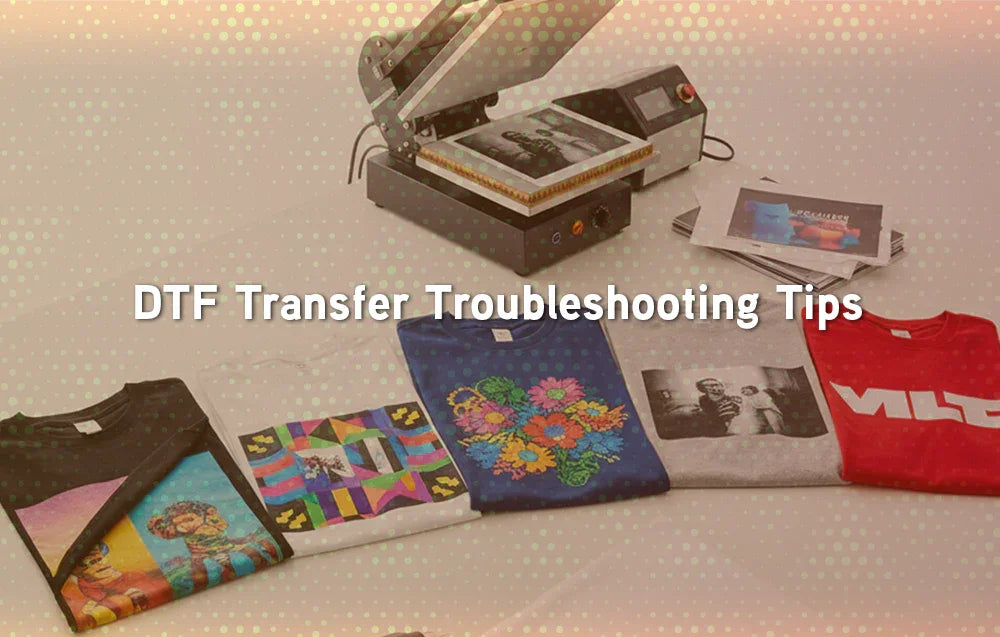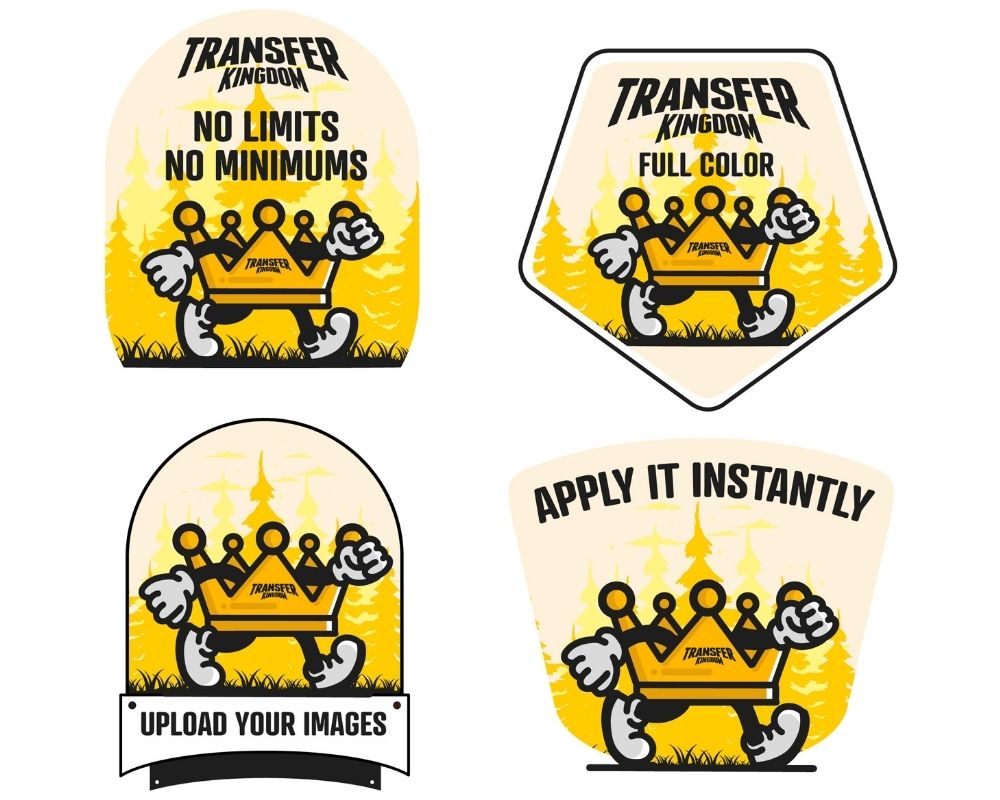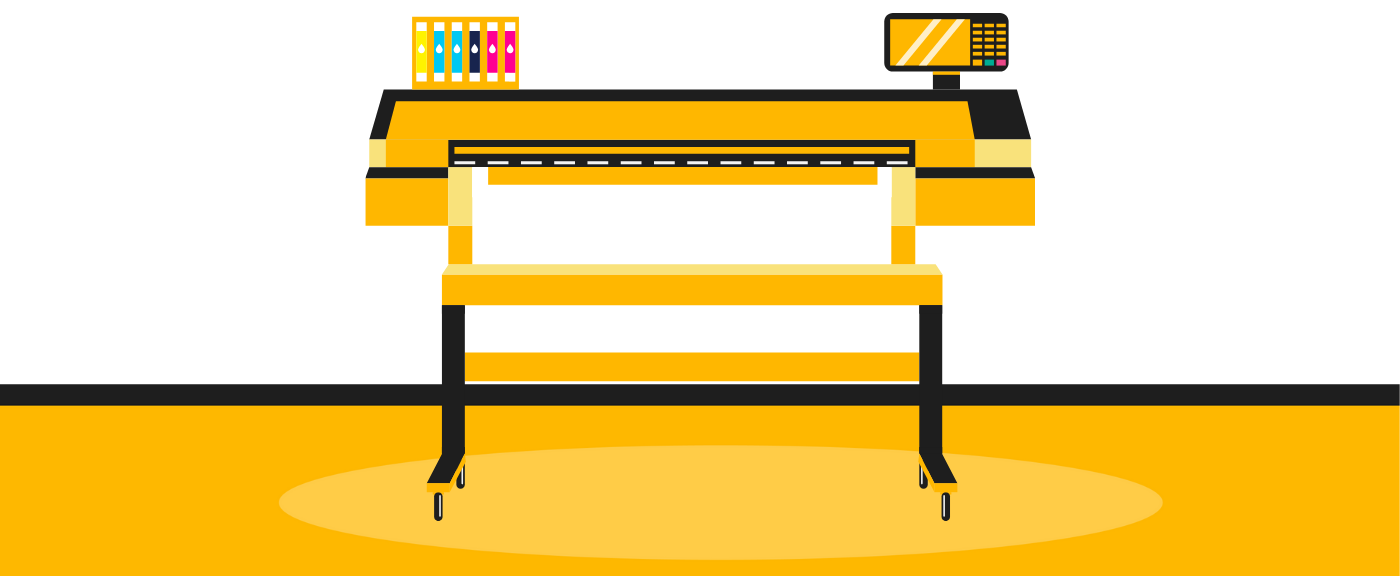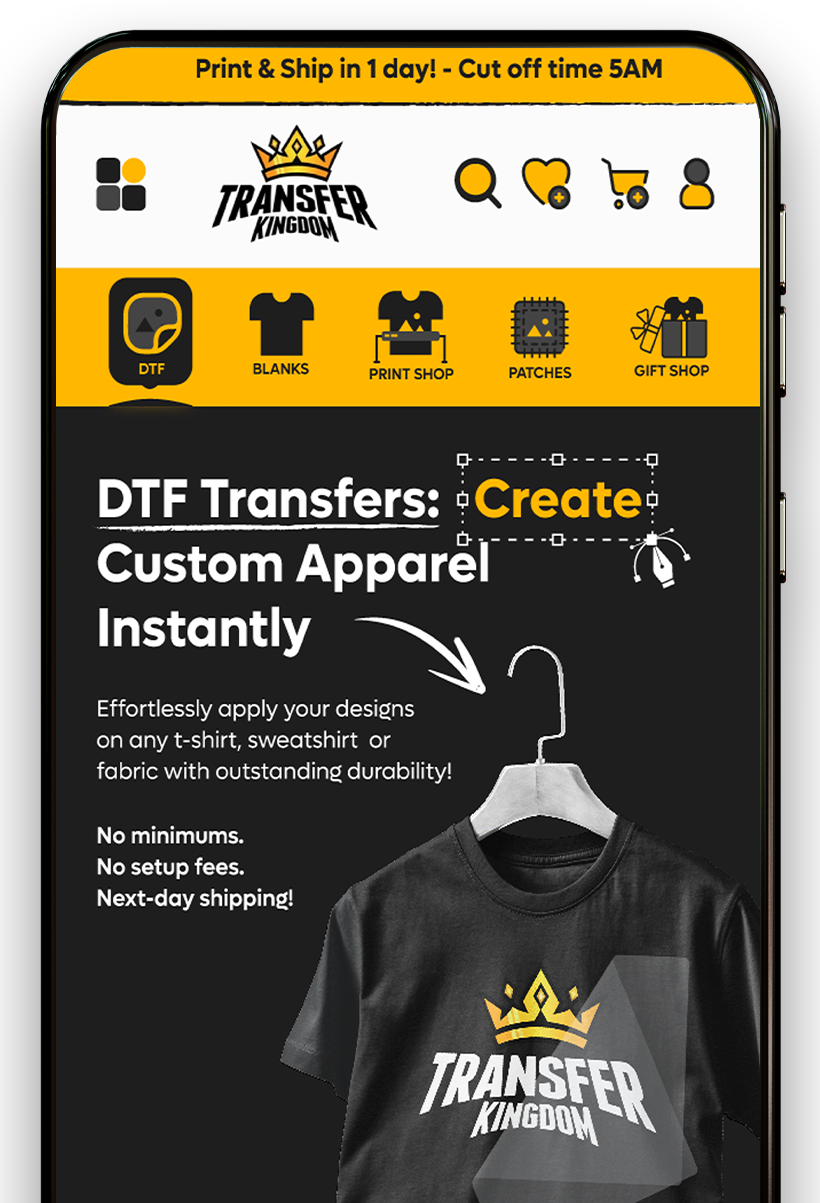DTF Transfer Troubleshooting Tips

Even experienced printers run into problems when applying DTF transfers. Peeling edges, faded colors, or transfers not sticking can all ruin an otherwise great design. The key is knowing how to troubleshoot quickly. This guide covers the most common DTF transfer problems, their causes, and step-by-step solutions so your prints stay vibrant and professional.
The Reality of DTF Printing
Imagine pressing a batch of shirts for a client in Houston. Everything looks fine until you peel the film and half the design doesn’t transfer. Or worse—the prints crack after the first wash.
👉 Don’t panic. These issues are common and fixable with the right troubleshooting tips.
Common Problems and How to Fix Them
1. Transfer Not Sticking
Cause: Wrong temp, pressure, or time.
Solution:
Cotton → 310–320°F, 12–15 sec, medium-firm pressure.
Polyester → 280–300°F, 8–12 sec.
Use Custom DTF Transfers and follow fabric-specific settings.
📌 Quick Recap: No stick = adjust press settings.

2. Peeling Edges After Wash
Cause: Too little pressure or skipped post-press.
Solution:
Repress with parchment paper for 3–5 seconds.
Always do a 2–5 sec post-press.
👉 For multiple designs, use Custom Gang Sheet Builder to test before bulk runs.
3. Faded or Dull Colors
Cause: Low heat or poor file quality.
Solution:
Use 300 DPI PNGs with transparent backgrounds.
Ensure temp is at least 300°F for cotton.
💡 Pro Tip: Test small designs first using Premade Gang Sheets.
4. Cracking Prints
Cause: Overheating or poor garment quality.
Solution:
Lower heat slightly (esp. for polyester).
Use quality blank shirts → Blank Apparel.
5. Design Lifting During Peel
Cause: Wrong peel method.
Solution:
Hot peel = immediate.
Warm peel = 5–10 sec wait.
Cold peel = wait until fully cool.
👉 If unsure, start with cold peel for safer results.

Troubleshooting Specialty Transfers
Glitter DTF → Needs slightly higher heat (315–325°F). → Glitter Transfers
UV DTF Cup Wrap Stickers → Even pressure is critical; repress if edges lift. → UV Stickers
Puff DTF → Under-pressing prevents puff effect; extend to 15–20 sec.
📌 Quick Recap: Specialty finishes = specialty care.
Troubleshooting Table
| Problem | Cause | Solution |
|---|---|---|
| Not sticking | Wrong temp/pressure | Adjust heat settings |
| Peeling edges | Skipped post-press | Repress 3–5 sec |
| Dull colors | Low heat or poor artwork | Use 300 DPI PNG |
| Cracks | Overheating or cheap fabric | Lower heat, upgrade blanks |
| Lifting during peel | Wrong peel timing | Match hot/warm/cold peel |
💡 Suggested Visual: Flowchart – “Problem → Check → Solution.”
Pro Troubleshooting Tips
Use a Heat Gun → Verify your press temp is accurate.
Always Pre-Press Garments → Removes moisture and wrinkles.
Cut and Test Small Sections → Before committing a full gang sheet.
Educate Customers → Cold wash, inside out, no softeners.
Use Reliable Uploaders → Try the Gang Sheet Uploader for clean submissions.
Case Study: Fixing Failing Festival Merch
A Houston-based team printed 400 shirts for a local festival. At first, prints were dull and edges lifted. After troubleshooting, they realized:
Polyester jerseys were pressed at cotton settings.
They skipped the post-press step.
By lowering temps to 290°F, 10 sec and adding a 3 sec post-press, every shirt came out flawless.
📌 Lesson: Most issues are solved by adjusting basics.
Conclusion
DTF transfer problems are frustrating but easy to fix once you know the causes. Whether it’s peeling edges, dull prints, or designs not sticking, the solution almost always comes down to adjusting press settings, file quality, or peel timing. Taking a little extra time to review these basics not only saves you money on wasted garments but also ensures that every order you produce meets professional standards.
With reliable materials like Custom DTF Transfers and smart tools like the Gang Sheet Builder, you can troubleshoot quickly, test small batches, and confidently scale up for larger runs. Even specialty finishes like glitter or UV can be mastered with the right adjustments. By combining high-quality transfers with proven troubleshooting techniques, you’ll keep customers happy, reduce reprints, and build a reputation for apparel that lasts.
👉 Don’t waste shirts—learn to troubleshoot, refine your process, and press with confidence on every single project.
Why is my DTF transfer not sticking?
Wrong temp or pressure—adjust settings.
How do I stop edges from peeling?
Post-press for 2–5 seconds.
Why are my prints dull?
Low heat or poor file setup.
Can polyester scorch?
Yes, use lower heat (280–300°F).
How do I fix cracks?
Lower heat and use better blank apparel.
What’s the best file format?
300 DPI PNG with transparent background.
Why is puff not working?
Needs longer press time.
Can humidity ruin transfers?
Yes, store flat in cool, dry places.
Should I peel hot or cold?
Follow film type instructions.
Where can I buy reliable transfers?
At Transfer Kingdom: DTF Transfers Ready-to-Press.










